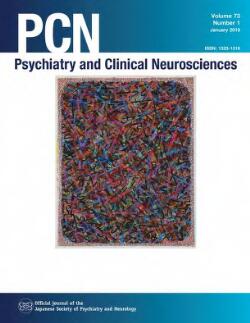Magnetic resonance imaging–based machine learning classification of schizophrenia spectrum disorders: a meta‐analysis
IF 5
3区 医学
Q1 CLINICAL NEUROLOGY
引用次数: 0
Abstract
BackgroundRecent advances in multivariate pattern recognition have fostered the search for reliable neuroimaging‐based biomarkers in psychiatric conditions, including schizophrenia. These approaches consider the complex pattern of alterations in brain function and structure, overcoming the limitations of traditional univariate methods. To assess the reliability of neuroimaging‐based biomarkers and the contribution of study characteristics in distinguishing individuals with schizophrenia spectrum disorder (SSD) from healthy controls (HCs), we conducted a systematic review of the studies that used multivariate pattern recognition for this objective.MethodsWe systematically searched PubMed, Scopus, and Web of Science for studies on SSD classification using multivariate pattern analysis on magnetic resonance imaging data. We employed a bivariate random‐effects meta‐analytic model to explore the classification of sensitivity (SE) and specificity (SP) across studies while also evaluating the moderator effects of clinical and non‐clinical variables.ResultsA total of 119 studies (with 12,723 patients with SSD and 13,196 HCs) were identified. The meta‐analysis estimated a SE of 79.1% (95% confidence interval [CI], 77.1%–81.0%) and a SP of 80.0% (95% CI, 77.8%–82.0%). In particular, the Positive and Negative Syndrome Scale and the Global Assessment of Functioning scores, age, age of onset, duration of untreated psychosis, deep learning, algorithm type, features selection, and validation methods had significant effects on classification performance.ConclusionsMultivariate pattern analysis reliably identifies neuroimaging‐based biomarkers of SSD, achieving ∼80% SE and SP. Despite clinical heterogeneity, discernible brain modifications effectively differentiate SSD from HCs. Classification performance depends on patient‐related and methodological factors crucial for the development, validation, and application of prospective models in clinical settings.基于磁共振成像的精神分裂症谱系障碍机器学习分类:荟萃分析
背景多变量模式识别技术的最新进展促进了对精神疾病(包括精神分裂症)中基于神经影像的可靠生物标记物的研究。这些方法考虑了大脑功能和结构改变的复杂模式,克服了传统单变量方法的局限性。为了评估基于神经影像的生物标志物的可靠性以及研究特征在区分精神分裂症谱系障碍(SSD)患者与健康对照(HCs)方面的贡献,我们对使用多变量模式识别实现这一目标的研究进行了系统性综述。方法我们系统性地检索了PubMed、Scopus和Web of Science中关于使用多变量模式分析对磁共振成像数据进行SSD分类的研究。我们采用了双变量随机效应荟萃分析模型来探讨不同研究的灵敏度(SE)和特异度(SP)分类,同时还评估了临床和非临床变量的调节效应。结果共发现了 119 项研究(包括 12,723 名 SSD 患者和 13,196 名 HC)。荟萃分析估计,SE 为 79.1%(95% 置信区间 [CI],77.1%-81.0%),SP 为 80.0%(95% 置信区间 [CI],77.8%-82.0%)。结论多变量模式分析能可靠地识别基于神经影像的 SSD 生物标记物,SE 和 SP 均达 80%。尽管存在临床异质性,但明显的脑部改变能有效区分SSD和HC。分类效果取决于患者相关因素和方法学因素,这些因素对前瞻性模型的开发、验证和临床应用至关重要。
本文章由计算机程序翻译,如有差异,请以英文原文为准。
求助全文
约1分钟内获得全文
求助全文
来源期刊
CiteScore
7.40
自引率
4.20%
发文量
181
审稿时长
6-12 weeks
期刊介绍:
PCN (Psychiatry and Clinical Neurosciences)
Publication Frequency:
Published 12 online issues a year by JSPN
Content Categories:
Review Articles
Regular Articles
Letters to the Editor
Peer Review Process:
All manuscripts undergo peer review by anonymous reviewers, an Editorial Board Member, and the Editor
Publication Criteria:
Manuscripts are accepted based on quality, originality, and significance to the readership
Authors must confirm that the manuscript has not been published or submitted elsewhere and has been approved by each author

 求助内容:
求助内容: 应助结果提醒方式:
应助结果提醒方式:


